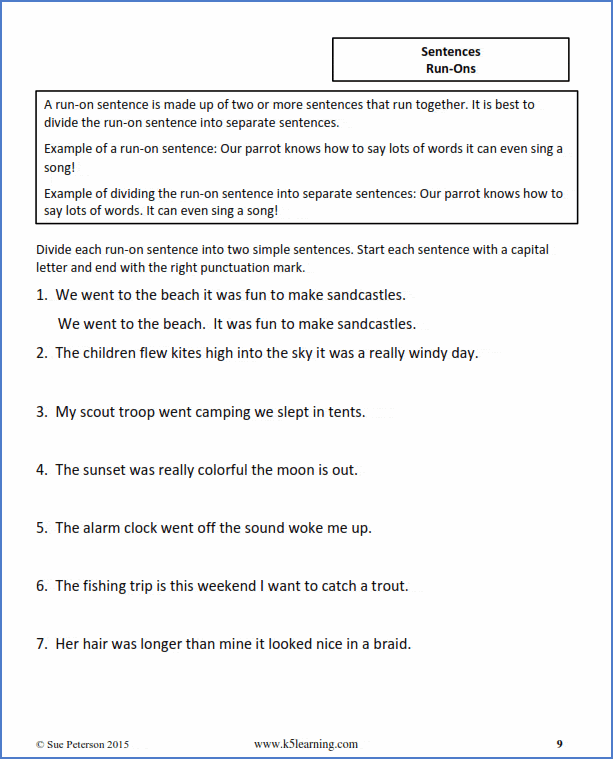What exactly are run-on sentences? Why do we care about them?
Run-on sentences
Basically, run-on sentences are sentences that lack proper punctuation.
A run-on sentence is made up of at least two parts. Either one of these two parts (or clauses) can stand as a sentence by itself. Somehow, though, they have been connected and that can lead to some confusion by its reader.
Here’s an example of a run-on sentence:
We went to the beach it was fun to play in the sand.
Here’s the correction:
We went to the beach. It was fun to play in the sand.
Fixing run-on sentences
There are many ways to fix run-on sentences. How you fix the sentence depends on the relationship between the two parts, or clauses. Here are some ways to fix those run-on sentences.
Fused sentences
Wrong: I am a woman I am a construction worker.
Correct: I am a woman. I am a construction worker.
Or, if you want to keep more of a connection between the two sentences, you can use a semicolon:
Correct: I am a woman; I am a construction worker.
Or, if you wanted to make a comment between the two sentences, you can use a conjunction (and, but, for, or, etc.):
Correct: I am a woman, yet I am a construction worker.
Comma splices
Sometimes writers will connect two independent clauses by only a comma. This is called a comma-splice.
Here’s an example of a comma-splice:
I wanted to see a movie, I had to clean my room first.
When you use a comma to connect two independent clauses, it must be accompanied by a conjunction (and, but, for, or, etc.)
The correction of the above sentence is:
I wanted to see a movie, but I had to clean my room first.
If you are interested in learning more about run-on sentences and practice how to fix them, our grammar and writing 3, grammar and writing 4 and grammar and writing 5 workbooks contain sections on run-ons.


